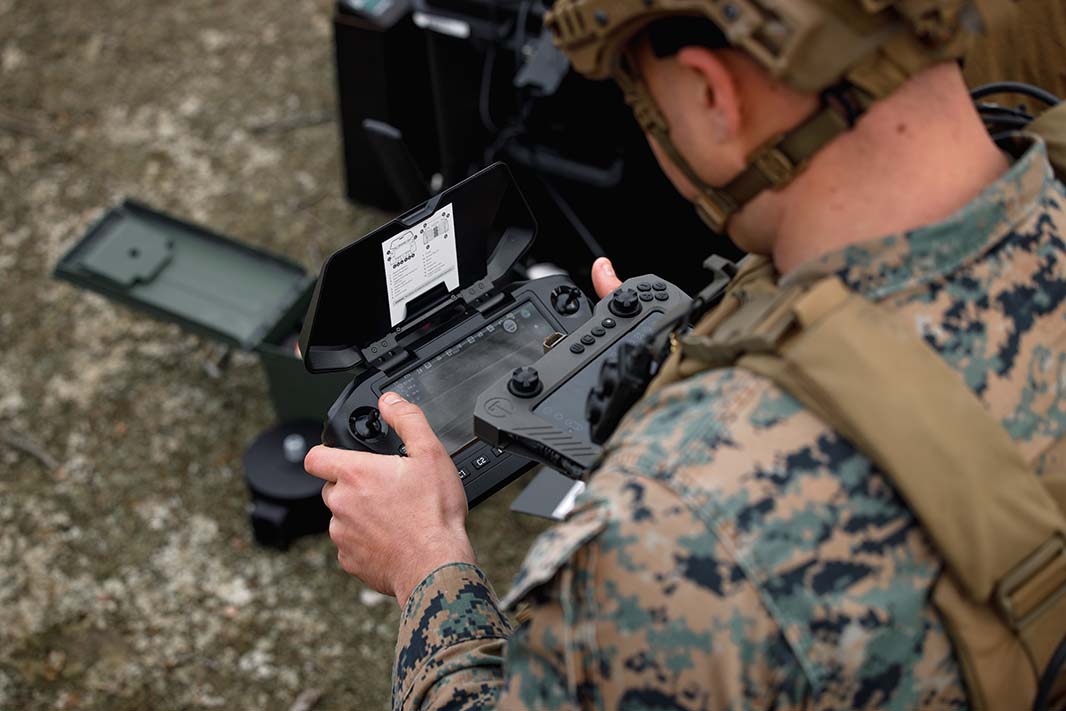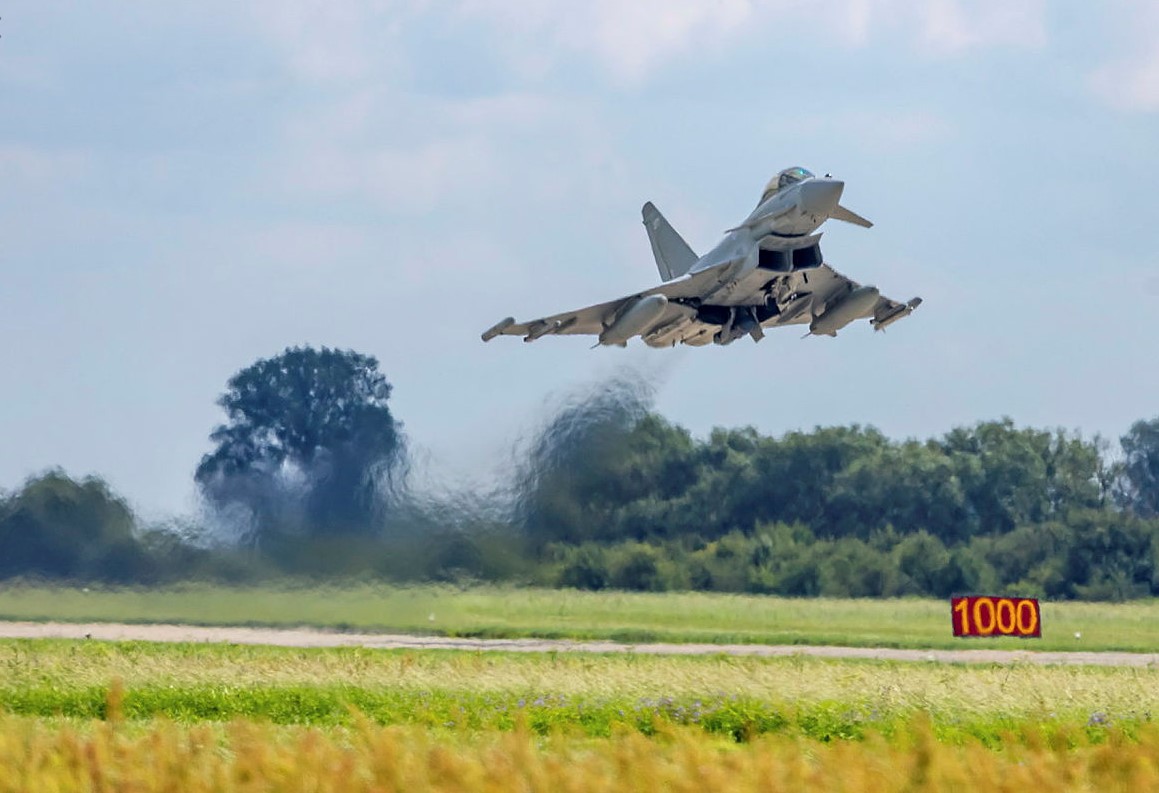The US Army and Marine Corps are significantly increasing the number of small UAVs assigned to tactical units, and are providing these assets to the lowest echelons.
The United States Department of Defense (DoD) classifies unmanned aerial vehicles (UAVs) into five groups based on a combination of size and performance parameters. Group 1 and Group 2 include UAVs weighing up to 9 kg (20 lb) and 25 kg (55 pounds) respectively, while Group 3 encompasses a very broad weight spectrum up to 600 kg (1,323 lb). For the most part, the US armed forces apply the term ‘small UAV’ (or SUAV) to those in Groups 1 and 2. This article will follow suit. While these unmanned aircraft are used by all services, the ground forces are the primary operators and will be the focus of this review. (Author’s note: There is one notable deviation from the standard application of ‘small UAV’ only to Group 1 and 2 aircraft. DoD Directive 3800.01E, which deals with counter small UAV activities, includes Group 3 aircraft in that category. However, counter-UAV applications are not discussed in this article.)
The US Army and US Marine Corps (USMC) are systematically expanding the integration of SUAVs at the tactical level, from battalion down to squad level. According to the Army’s FY2026 budget request to Congress, these will provide ground forces with “situational awareness and enhanced force protection. The systems provide an organic and responsive reconnaissance and targeting capability with real-time full motion video and sensor data”. Specific capabilities inherent in the SUAVs include intelligence, surveillance, and reconnaissance (ISR), target acquisition and strike, electronic warfare operations, and other missions.
Currently operated SUAVs
The US Army currently operates several categories of SUAV, optimised for the tactical requirements of various echelons. The majority are easily portable by one or two soldiers – sometimes disassembled with wings, hulls and/or payloads carried separately – and are independent of specialised launch equipment. In most cases, soldiers of any military occupational specialty can be trained to operate the systems. Frequently deployed assets include:
RQ-20 Puma
The AeroVironment RQ-20 Puma entered service with USSOCOM in 2008, followed by the US Army and other services. The standard issue RQ-20B has largely been replaced by the Puma 3 AE which features enhanced payload capacity and an extension of the 20 km range to 60 km when utilising a long-range tracking antenna on the ground control unit. The primary payload consists of a gimbal-mounted high-resolution optronic video sensor and laser illuminator. The Army assigns the 2.8 m wingspan Puma at company and platoon level, while the USMC has utilised it at battalion level.

RQ-11 Raven
The AeroVironment RQ-11B Raven was selected by the US Army in 2005, and was subsequently acquired by the USMC, US Special Operations Command (USSOCOM), and the US Air Force. The rucksack-portable UAV has a 10 km range and flight endurance of 75+ minutes. It carries a gimbaled optronic payload and an optional laser designator for low-level ISR missions. The 2.2 kg Raven can be assembled within five minutes and is launched by hand like a model aeroplane. In 2020, the RQ-11B was upgraded with new radio modules, flight control and ground control systems to optimise performance for the company-level medium-range reconnaissance (MRR) mission. In 2024, Army Chief of Staff General Randy George announced that the Army would phase out the Raven in favour of systems more capable or survivable on today’s battlefield.

RQ-12A Wasp AE
The AeroVironment RQ-12A Wasp AE is assigned to Army and USMC platoons and reconnaissance squads to enhance situational awareness. The hand-launched, fixed-wing micro-UAV has a 5 km range and a 50-minute flight endurance. Introduced in 2014 (as replacement for the older Wasp III), this asset is being displaced by newer VTOL and hybrid designs.
Family of small uncrewed aircraft systems
The Army is currently seeking to “increase investments in research and development to expand and accelerate the Army’s unmanned aerial reconnaissance capability”, Gen. George announced in February 2024. As part of the Transformation in Contact (TiC) initiative introduced in late 2023, the Army is evaluating various types of small UAV for potential integration into ground units. Expansion of the drone arsenals of all categories is in line with the current administration’s policy priorities. A 30 April 2025 memorandum by Defense Secretary Peter Hegseth specifically directed the Army to field unmanned systems and ground/air launched effects “in every Division by the end of 2026”. This was followed by a 16 July 2025 press release citing a second memorandum by the Defense Secretary “rescinding restrictive policies that hindered drone production”.
These policies are partly about increasing the number of unmanned aircraft in service, and partly about replacing legacy systems with more advanced and capable aircraft. For the US Army, the proposed Family of Small Uncrewed Aircraft Systems (FoSUAS) will play a central role in this expansion. The Army’s Justification Book for the FY2026 budget estimates outlines the ‘family of systems’ significance. “These systems ensure Army formations have the best existing and emerging technology at battalion and below to allow ground-based forces to project power from land into other domains to defeat highly capable enemies, secure terrain, and consolidate gains. The Rucksack Portable Uncrewed Aircraft System (RPUAS) Family of Small Uncrewed Aircraft System (FoSUAS) (will) solve current and emergent operational gaps by incorporating Modular Open Systems Approach (MOSA) including swappable payloads, advanced autonomy and software scalability.”
FoSUAS is designed to align specific aerial systems to specific echelons between squad and battalion, with capabilities tailored to each unit level. Aircraft are to be selected according to what the Army calls a “flexible and agile acquisition plan” that makes full use of evolving technology. The Congressional Research Service (CRS) cites Congressional testimony by Army officials who say that the service’s modular open systems approach (MOSA) to its SUAV programmes could enable the Army to “upgrade platforms without being locked into a specific configuration or solution.” SUAVs are being sought to fulfil specific operational categories.
Soldier-borne sensor (SBS)
The SBS programme equips Army squads with a short-range small reconnaissance UAV weighing less than 150 g with a 15 minute flight endurance. The 70 g Teledyne FLIR Black Hornet, with a 2 km range and a 30 minute flight endurance, currently fills the SBS role.
Purpose built attritable system (PBAS)
According to the CRS, the PBAS programme will provide a first-person view (FPV) drone capability for Army platoons. The CRS’ 15 August 2025 US Army Small Uncrewed Aircraft Systems Programs report cites Army requirements documents which state that the PBAS system consists of “two (25 cm) air vehicles and four (12.5 cm) air vehicles with modular payload(s) to include ability to integrate and employ a variety of lethal/non-lethal armaments and munitions.” No selection of UAV systems has been announced to date.
Short-range reconnaissance (SRR)
The SRR provides manoeuvre platoons and squads with an organic real time imagery/battlefield situational awareness and target acquisition capability with a 30-minute flight endurance. According to Army budget documents, the system “includes modular payloads, obstacle avoidance, target recognition, automated following, and networked capability”. The SRR constitutes the first US Army programme of record to supply a small quadcopter to the platoon level. In 2022 the Army selected the Skydio X2D and the Teal Drones Golden Eagle quadcopters as the initial SRR systems. In 2025 the Army selected the Skydio X10D and the Teal Drones Black Widow for the SRR tranche 2.
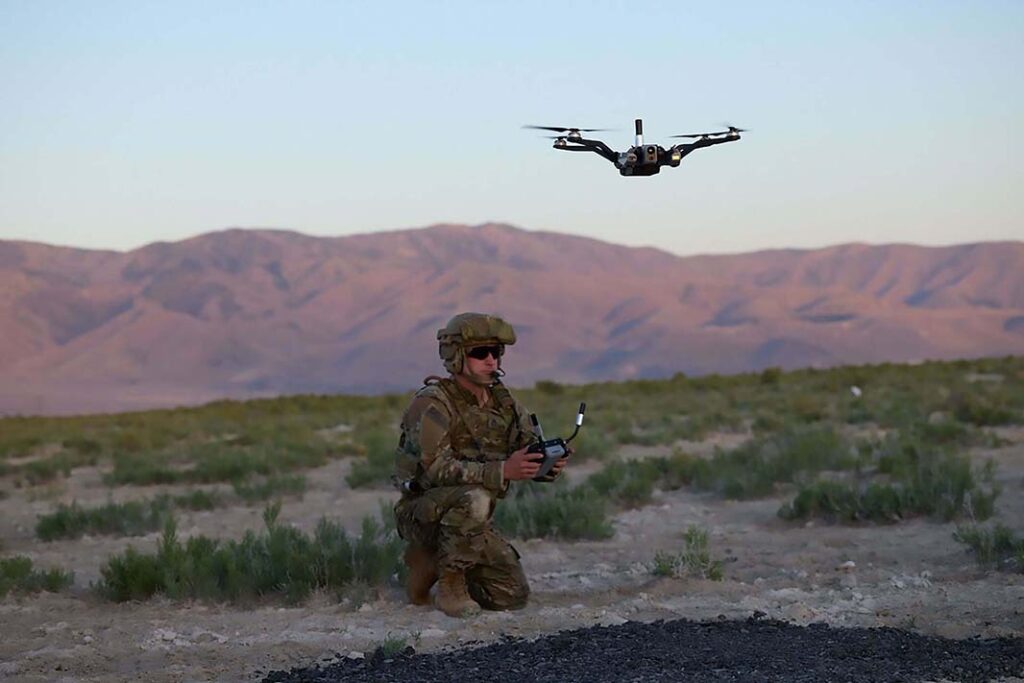
Medium-range reconnaissance (MRR)
The MRR provides Army companies with an ISR-capable UAV with a minimum range of 10 km and a 30 minute flight endurance. Seeking a replacement for the RQ-11 Raven, the Army’s FY2026 budget request includes funding for an initial 107 “company-level” SUAVs. Anduril Industries (Ghost X) and Performance Drone Works (C-100) have been selected to supply the aircraft.
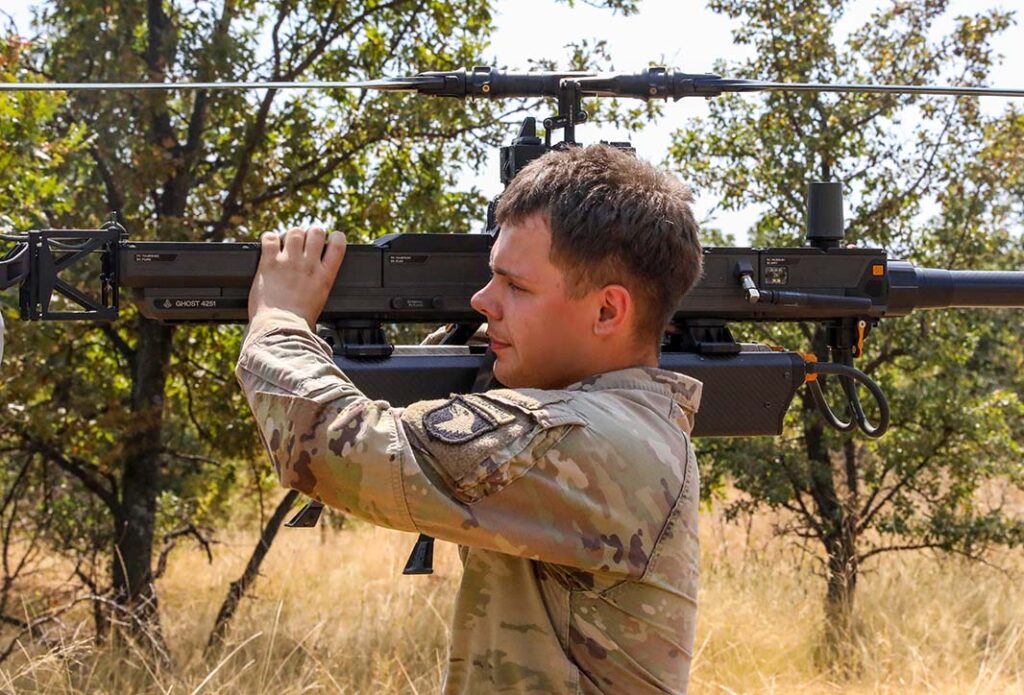
Long-range reconnaissance (LRR)
The LRR will provide a Group 2 UAV to manoeuvre battalions to provide an organic reconnaissance, surveillance, and target Acquisition capability. According to Army budget documents, the UAV will have a range of 40-60 km and flight endurance of 5-10 hours. Attributes will include assured positioning, navigation and timing (APNT), optronic sensors, laser targeting/designating, “and kinetic architectures in a contested environment”. On 21 August 2025, the Army announced contract awards to AeroVironment and Edge Autonomy to rapidly deliver initial sets of their P550 and Stalker Block 35X UAVs, respectively. Fielding to operational units will begin later in the year as part of the Transformation in Contact 2.0 initiative. The Army states that it anticipates additional LRR system selections in the future.
Joint Tactical Autonomous Aerial Resupply System (JTAARS)
The Army’s FY2026 budget justification book includes the JTAARS under the SUAV category although the programme specifically calls for a Group 3 UAV. The autonomous aerial cargo delivery system will be organic to the manoeuvre commander and “provides options for rapid and agile sustainment of highly mobile tactical combat forces, operating in a widely dispersed manner in the tactical support and close areas. (It reduces) the tactical force’s dependence on ground lines of communication and sustainment (and shrinks) the supply chain”. Performance requirements include a 57 kg lift capability over 13 km one way (26 km round trip). The programme is currently at the prototyping stage. The Army and USMC are cooperating in the development of this capability.
USMC transitions from ISR to offensive missions
Like the Army, the USMC has primarily treated SUAVs as reconnaissance assets. Additionally, the Corps has tested their utility for frontline supply missions. More recently, the Corps has begun to exploit their offensive capacity. On 3 January 2025, the Marine Corps Training Command established the Marine Corps Attack Drone Team (MCADT). The USMC describes the decision as a response to the rapid proliferation of armed FPV drone technology and tactics observed in modern conflicts, particularly in Eastern Europe. “As emerging threats continue to evolve, the Marine Corps is prioritising the integration of FPV drone capabilities to enhance lethality and operational effectiveness across the Fleet Marine Force (FMF),” reads a March 2025 press release regarding the foundation of the MCADT.
The Team is incorporated into the Weapons Training Battalion (WTBn) at Marine Corps Base (MCB) Quantico, Virginia. “MCADT is committed to rapidly integrating armed first-person view drones into the FMF, enhancing small-unit lethality and providing organic capabilities that warfighters currently lack” said Maj. Alejandro Tavizon, headquarters company commander at Weapons Training Battalion and officer in charge of MCADT. “By leveraging emerging technologies and refining drone employment tactics, we are ensuring that Marines remain agile, adaptive, and lethal in the modern battlespace.” Working in coordination with the Marine Corps Warfighting Laboratory, the Team will develop and refine armed FPV drone training, identify current and future requirements to ensure rapid fielding of cutting-edge FPV technologies, and train Marines at the individual and unit level to enhance lethality and operational effectiveness. The USMC is currently participating in drone operator competitions with other service branches, and intends to hold internal competitions for FPV and SUAV operators beginning in FY 2026. In June 2025 the 1st Marine Division also published the Corps’ first 90-page drone operations handbook focussed on SUAV operations.
Parallel to the training efforts, the USMC is ramping up acquisition of combat-capable SUAVs. On 3 July 2025, the Corps conducted its first live-fire exercise involving lethal-payload delivery by SUAVs. The primary test involved the vertical take-off and landing (VTOL) Archer FPV made by Neros Technologies. Additionally, the Skyraider Quadcopter, which the Corps uses for ISR missions, was evaluated for ordnance-delivery suitability. In August 2025, Brig Gen Simon Doran, Vice Chief of Naval Research, confirmed USMC plans to award a contract to Neros for the purchase of 8,000 Archer drones to extend the lethal range of its infantry formations. The jamming-resistant UAV can deliver a 2 kg explosive payload to strike a ground target at 20 km distance or intercept airborne targets at 10 km distance.
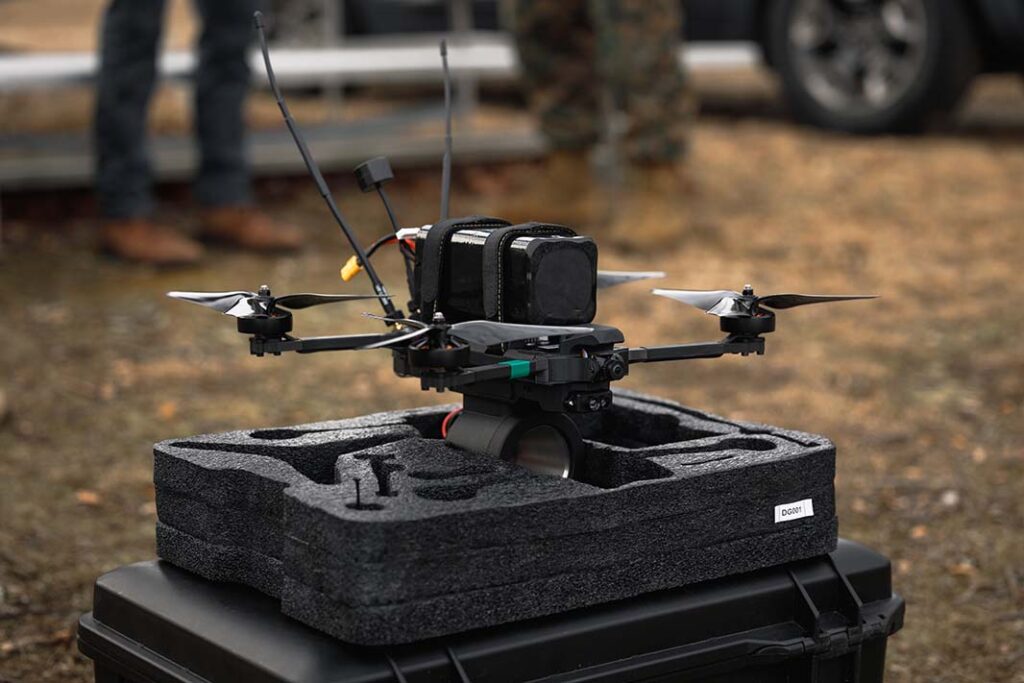
The first unit to field the Archer will be the 3rd Light Armored Reconnaissance Regiment, but the planned acquisition of 8,000 units points to a much wider distribution within the force. Col Scott Cuomo, commander of the USMC’s Weapons Training Battalion at Quantico, told reporters in July 2025 that FPV capabilities would be fielded “down into our infantry squads, and then you’re also going to see them inside of the new Force Design battalion, inside of the organic precision fires section, within the fires and reconnaissance company, and you will very likely see them inside the scout platoon as well.” This mirrors Ukrainian battlefield tactics and reflects a shift toward precision strike capabilities embedded at the lowest tactical levels.
Attack mode
The Army is following suit. The first session of the Army’s new Unmanned Advanced Lethality Course (UALC) was launched on 18 August 2025 at Fort Rucker, Alabama. According to the accompanying press release, the three-week UALC is designed to rapidly train soldiers on the lethal employment of SUAVs. “The course lays the foundation for standardised UAS employment across warfighting functions, redefining how small UAS platforms are used in reconnaissance, fires, and maneuver operations.” The initial class had 28 participants from various military specialties, “and they are going to leave here as lethal operators that can go back out and train their units”, said Maj Gen Clair Gill, commanding general of the Army Aviation Center of Excellence and Fort Rucker on 18 August.
Designed to evolve with battlefield needs, the UALC will adapt its curriculum as new technologies and tactics emerge. Future iterations will expand into advanced tactics, including one-way attacks using purpose-built FPV drones. By February 2026 the course director, Capt Rachel Martin, envisions students employing low-cost systems to prosecute targets with precision, a major step toward integrating UAVs as a lethal, scalable weapon system. “I am very aware that my team has been entrusted with developing solutions for a critical need in emerging Army tactics,” Martin said. “This course is a catch-up. We’re behind globally, and this is our aggressive attempt to close that gap.”
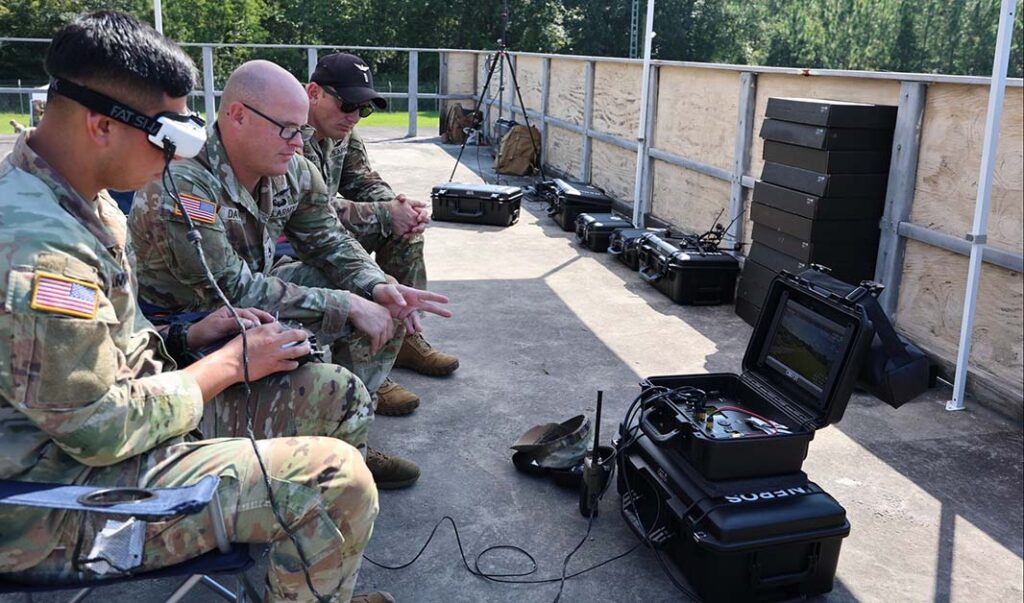
Sidney E. Dean
